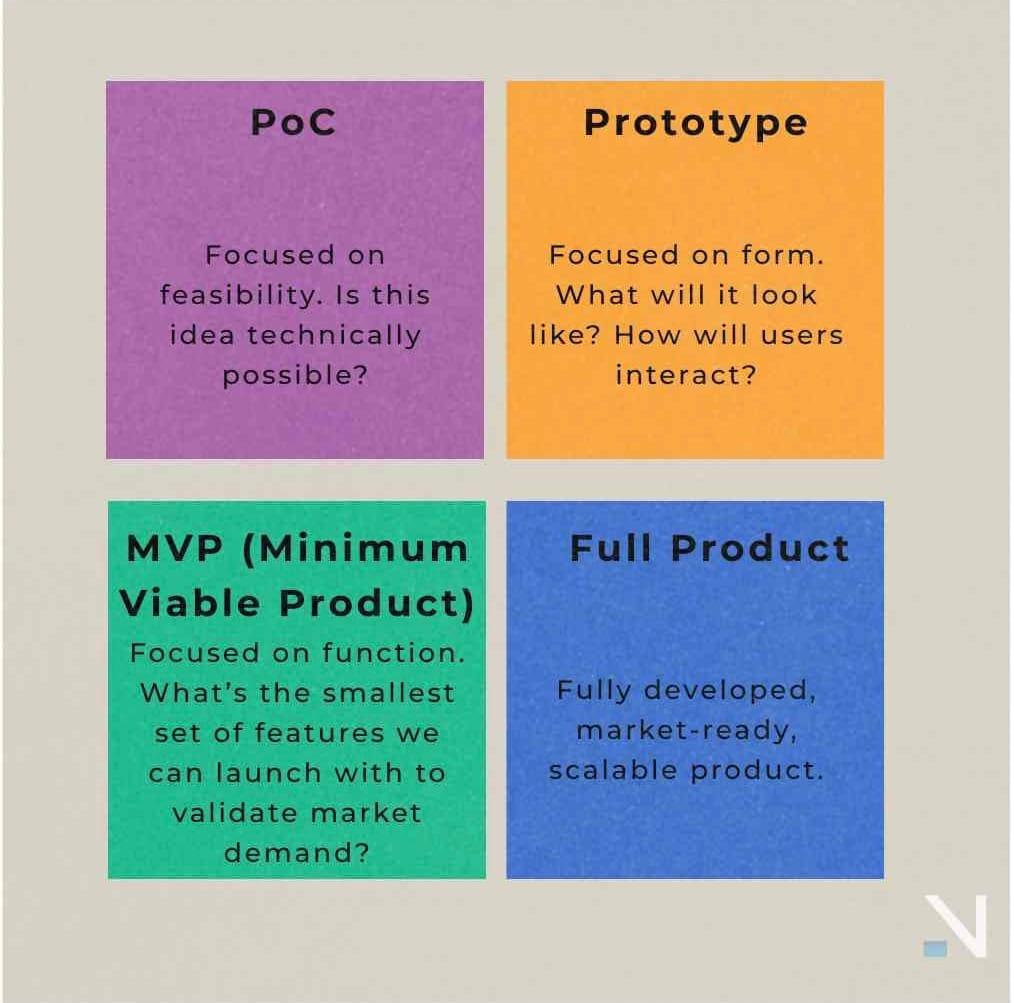What is a Proof of Concept, Really? And Why Your Idea Needs One
Narima Digital •

So, you’ve got a bold idea for a digital product. Maybe an app that streamlines internal operations, a new way to connect with customers, or something that could shake up your industry. But here’s the thing: jumping straight into full-scale development is like building a house without checking the foundation.
That’s where a Proof of Concept (PoC) comes in. And no, it’s not just another tech buzzword.
What is a Proof of Concept?
A PoC is a small, focused experiment designed to validate whether a core idea is feasible—technically, functionally, or even operationally—before you commit big budgets and long timelines. Think of it as a low-risk way to answer, “Can this work?”
It’s not about pixel-perfect designs or full features. It’s about clarity.
For example, if you're planning to build a logistics automation platform, a PoC might explore whether your system can actually integrate with multiple courier APIs in real-time. If you're thinking about a mobile banking app, the PoC might test secure user authentication or a new user flow.
PoC vs. Prototype vs. MVP vs. Full Product

Let’s break down the differences with a bit more depth:
- PoC (Proof of Concept): This is your initial test. It’s where you validate the feasibility of your core idea—can it work technically or logically? At this stage, it might be a back-end test, a simple script, or a basic model. The goal isn’t to impress users—it’s to prove something can function as expected.
- Prototype: Once feasibility is confirmed, a prototype helps visualize your concept. It’s typically a clickable design mockup or interactive layout. It shows stakeholders what the product might look like and how users will move through it. Think of it as the skeleton of the user experience.
- MVP (Minimum Viable Product): Now you’re building something real. An MVP is the first version of your product with just enough features to satisfy early adopters and validate market demand. It’s working software, but it’s intentionally limited—designed to test and learn.
- Full Product: This is the final, polished solution ready to scale. It has robust features, performance optimizations, security, and long-term support. By now, it should reflect everything you’ve learned from the earlier stages.
Each of these stages supports the next. Skip PoC, and you risk building a prototype no one can implement. Skip the MVP, and you might invest heavily in features users don’t care about. The PoC is your safety net and your springboard.
Why Your Idea Needs a PoC
Too many good ideas fail not because they’re bad—but because teams jump too far ahead, too fast. A PoC helps you:
- Save money: Find out early if your core assumptions are valid.
- Avoid rework: Build smarter, not harder.
- Get stakeholder buy-in: It’s easier to convince your board, investors, or leadership with a working concept.
- Learn fast: Quickly identify tech limitations or UX blockers before they become expensive problems.
Think of it as the GPS that helps you navigate your product journey—before spending a cent on the highway toll.
What Dropbox Can Teach Us About PoC
Let’s talk about one company that did PoC right—Dropbox.
In its early days, Dropbox wasn’t a slick app with millions of users. It was an idea: what if file syncing just worked seamlessly across devices? But rather than jumping into development and burning cash, the founders created a simple video that showed how the product would work. No code. Just a clear story.
That video was their Proof of Concept.
The results? It generated a huge wave of sign-ups and interest—validating that people actually wanted the solution. Investors were convinced. Users were excited. And the team now had a clear direction to build something people truly needed.
Lesson learned? A good PoC doesn’t have to be fancy. It has to be focused. And it has to prove the one thing that matters most: is this worth building?
Why Narima Cares About PoC
At Narima, we don’t just build things, we help validate ideas. When clients come to us with a rough sketch, a pitch deck, or even just a conversation, our job is to turn that into a concrete test.
We’ve worked with a service consultancy to develop a secure client portal that simplified onboarding and document access. We also partnered with a property company to build a web-based application that validated their property valuation model—critical for generating investor-ready prospectuses. Each started with a focused PoC and evolved into impactful digital products.
Ready to Explore What’s Possible?
If your team has been sitting on a smart idea—or if you’ve been burned by launching too soon—it might be time to go back to basics. A proof of concept can save your vision.
In the next article, we’ll explore why PoC can actually save your time, budget, and team sanity. Stay tuned.


